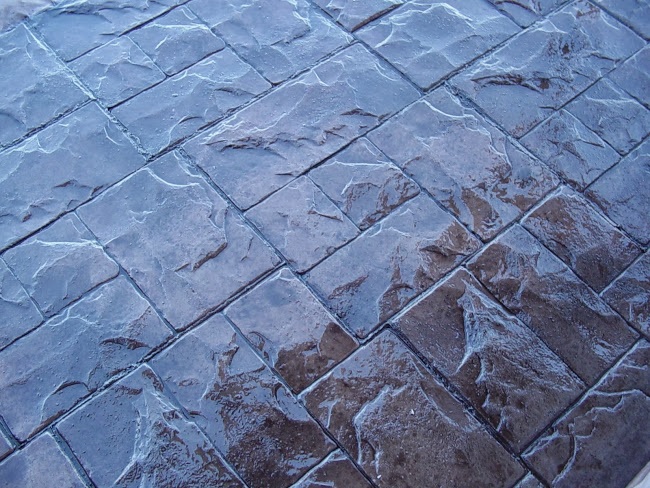Wet look sealers can last anywhere from 2 months to up to 5 years depending on several factors including:
- The type of surface the wet look sealer was applied to.
- The amount of subsurface moisture present.
- The amount of surface abrasion the sealer is exposed to.
- The type of sealer used and the amount of sealer applied.
- The porosity of the substrate the wet look sealer is being applied to.
- The location of the substrate and amount of exposure to snow, sleet, and sun.
- The PH level of the substrate.
There are two main types of wet look sealers. There are solvent based acrylic sealers and there are penetrating sealers. Penetrating wet look sealers are designed to slightly enhance the color of the surface without leaving behind a surface film. Penetrating wet look sealers don’t offer a dramatic enhancement, but they do offer a slight enhancement to color. These types of sealers are desirable because they can last up to 3-5 years and aren’t impacted by most of the above factors listed. Even though the sealer benefits will extend out to up to 5 years, you may decide to recoat sooner to keep a consistent color enhancement. There is no surface film to maintain and that eliminates a lot of issues. The level of darkness achieved will vary from one substrate to the next. The porosity of the surface and the amount of sealer applied will determine how dark the substrate gets. You may notice a very slight enhancement, or you may notice more of an enhancement. It is best to apply the sealer to a test area first to see if you are satisfied with the enhancement on your particular structure. Another benefit to penetrating wet look sealers is they can be applied to virtually all types of unsealed concrete, brick, and natural stone. The Armor WL550 is a top rated penetrating wet look sealer.
The second type of wet look sealer is a solvent based acrylic sealer. Acrylic sealers are designed to leave behind a visible surface film, usually in the form of a low to high gloss. Acrylic sealers leave behind a surface film which makes them vulnerable to several of the above factors. In a perfect environment, a higher quality acrylic like the Armor AR350 (low gloss) or Armor AR500 (high gloss) will outlast a “cheaper” sealer by up to a year, but there are some cases in which the quality of sealer won’t matter. For example, if you have applied a different acrylic every year for the past few years and you have found that they all fail by the end of the season, there is likely an issue with the substrate. It could be moisture, it could be PH, it could be a variety of factors. If there is a factor present causing the sealers to continuously fail, it is likely that anything you would down will have the same life. If this is the case and you are frustrated with having to reseal, you want to consider a penetrating wet look sealer instead.
Now, if you like what your substrate looks like sealed with an acrylic sealer and want to maintain a consistent level of gloss you can reseal every 1-2 years. Resealing a solvent based sealer is as easy as putting a fresh coat down on a clean and dry surface. There is no sanding or scuffing required with a solvent based acrylic sealer.
Before choosing a wet look sealer you need to consider the above factors, but also thing about what you want the surface to look like. I personally love the look of an acrylic so I don’t mind resealing every 1-2 years, but that is my preference. If you don’t want to reseal every year, and if gloss isn’t important to you, then a penetrating sealer wet look sealer is the best option.
Here is a quick recap of the differences between the types of wet look sealers:
- Penetrating wet look sealers don’t leave behind a surface film and acrylic wet look sealers leave behind a low to high gloss film.
- Penetrating wet look sealers are rarely impacted by the factors listed above and acrylic wet look sealers are.
- Penetrating wet look sealers don’t need to be reapplied every year but acrylic wet look sealers should be applied every 1-2 years.
- Penetrating wet look sealers won’t prevent colored surface from fading but acrylic wet look sealers will help to protect colored surfaces.
- Penetrating wet look sealers will offer a slight enhancement to color and acrylic wet look sealers will offer more of a dramatic color enhancement.

